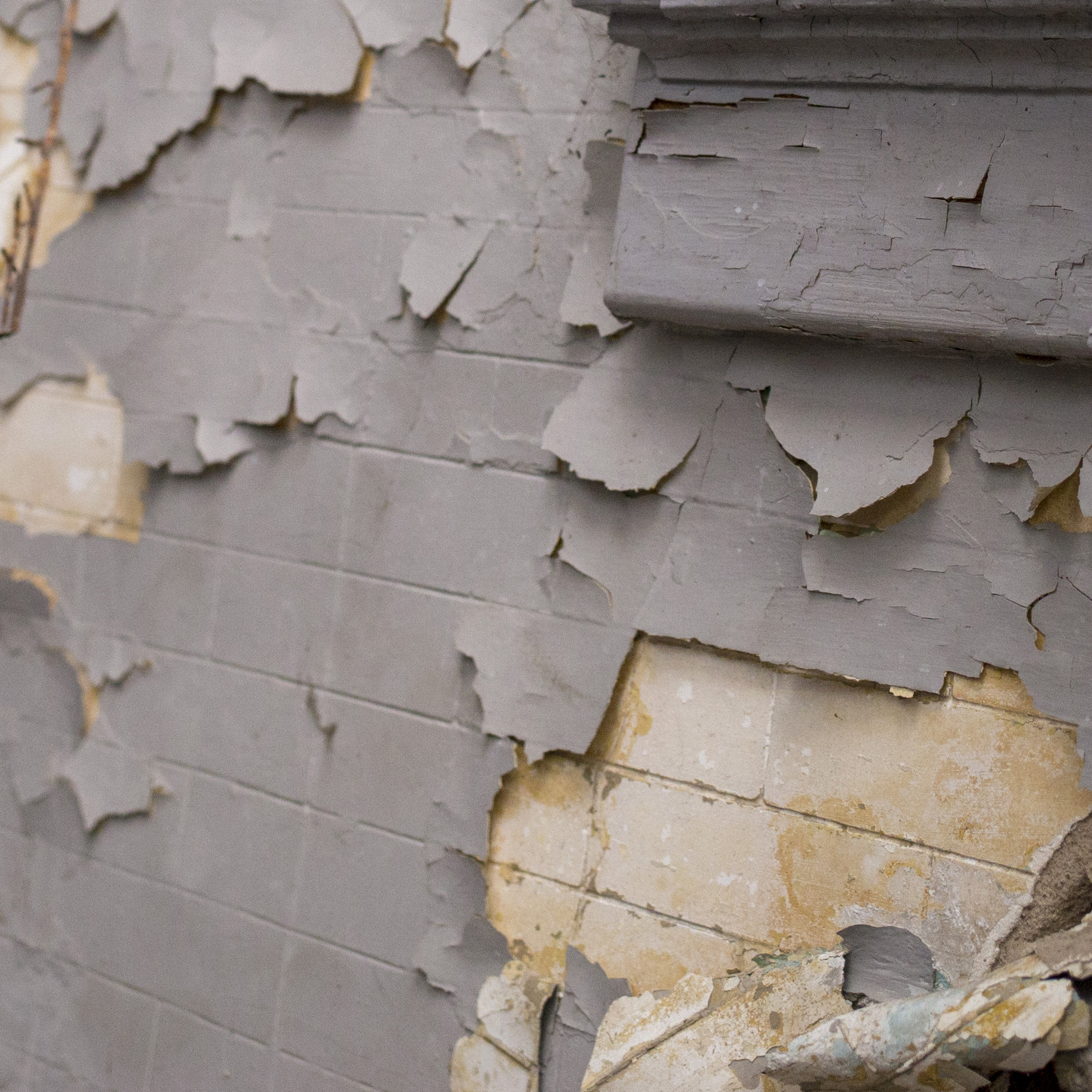Lead in NYC Homes
Beginning in 1960, New York City banned the use of lead-based paint in residential buildings.
The Childhood Lead Poisoning Prevention Act (2004) requires, in part, that building owners investigate units and common areas where lead-based paint may be present, specifically focusing on units with a child under six years old.
Any lead-based paint hazards or violations must be fixed using safe work practices and detailed records of investigation and remediation efforts must be maintained.
Despite these existing requirements, tenants in both public and private housing are frequently unaware of lead hazards and can unknowingly be at risk. Exposure to this toxic substance, which is especially harmful to children, has continued.
Lead in NYC
Illegal Lead
Lead-Based Paint Banned in NYC
1960
Lead-Based Paint Violations
111,509 Violations
Jan 2018 – March 2023
Lead Cases in NYC Courts
3,714 Building Owners
2006 – March 2023
Lead Cases in NYC Courts
45% in the Bronx
2006 – March 2023
Tenants
If your building owner does not fix peeling paint, or you think the work is not being done safely, you can file a complaint online or by calling 311.
Legislation
Lead is particularly dangerous for children. As a result, the City Council is hearing a package of legislation to protect all New Yorkers from lead.
These bills set the technical standards for enforcement, including what is considered an elevated blood lead level or a lead-based paint hazard.
Current standards have been in place since 2004, and in that time, the Centers for Disease Control (CDC) has recommended a lower blood lead level for intervention, which this legislative package codifies.
This package of bills ensures that the City uses the most up-to-date standards to protect children from being poisoned by lead.
- Require property owners to produce records of self-inspections conducted by such owner, and records of any measures taken to abate lead-based paint hazards, whenever a violation for lead-based paint hazards has been issued by the City. Read the Bill: Int 0005-2022
- Requires the lead-based paint abatement activities currently required upon turnover, including the removal of lead-based paint on friction surfaces on doors and windows, to be completed in all applicable dwelling units where a child under the age of six resides, by July 1, 2023. Read the Bill: Int 0006-2022
- Make the existence of peeling lead-based paint in any common area of a multiple dwelling where a child under the age of six resides a class C hazardous violation. The legislation would also include common areas as part of the current inspections for lead-based paint hazards in dwellings required under the City’s lead laws. Read the Bill: Int 0193-2022
- Require the Department of Health and Mental Hygiene (“DOHMH”) to submit a quarterly report of the number of objections filed by multiple dwelling owners to DOHMH lead abatement orders. The report would be required to include the number of objections filed by NYCHA and to specify the reasons why any objections are found to have merit, including faulty testing or paint sampling, or an exemption based on the dwelling’s construction date. Read the Bill: Int 0200-2022
- Creates a proactive inspection program where the Department of Housing Preservation and Development (“HPD”) and the DOHMH would identify at least 200 residential buildings each year that may pose a risk of lead exposure to children who reside in such buildings. Inspectors would then inspect such buildings for any lead-based paint hazards and proceed to order that any such hazards be abated. Read the Bill: Int 0750-2022
- Require the HPD to declare a lead hazard a public nuisance where DOHMH issues a commissioner’s order to correct or remediate a condition related to lead hazards. Read the Bill: T2023-3347 (Preconsidered)
- Require DOHMH to provide a referral for any child determined to have elevated blood lead levels to the Committee on Special Education of the Department of Education for a neuropsychological or neurodevelopmental evaluation in order to determine the child’s eligibility for special education services, including the development of an individualized education program. Read the Bill: T2023-3348 (Preconsidered)
Lead Paint Violations
In New York City, lead-based paint hazards remain a significant public health concern, particularly for children.
Lead-based paint was commonly used in homes and buildings prior to its ban in 1960 in New York City, and many older buildings still contain lead paint.
When lead paint deteriorates or is disturbed, it can release toxic lead dust or chips, which can be ingested or inhaled, leading to lead poisoning.
Due to New York City’s high population density and older housing stock, vulnerable populations, including low-income families, communities of color, and immigrants, are at an increased risk of exposure to lead-based paint hazards.
New York City has implemented various regulations and programs to address lead-based paint hazards, including local laws requiring lead inspections and remediation in certain housing units.
HPD Lead Paint Violations by Borough
Jan 2018 – March 2023
Source: Department of Housing Preservation and Development (HPD) Lead Violations
HPD Lead Paint Violations Over Time
Jan 2018 – March 2023
Source: Department of Housing Preservation and Development (HPD) Lead Violations
Challenges still persist related to enforcement, lack of affordable housing options without lead hazards, and gaps in public awareness and education about lead paint risks.
Between 2004 and 2018, there were 133,372 lead-based paint violations issued in New York City. Between 2018 and March 2023, 111,509 lead-based paint violations were issued in New York City.
As of March 2023, 45% of all lead-related court cases in New York City were in the Bronx.
City-wide, boroughs received varied numbers of HPD Lead Paint violations per 1000 units. The Bronx had the most violations with 73 violations per 1,000 residential units.
Since January 2018, there has been a steady increase in the number of HPD Lead-based paint violations.
In January 2018, there were 1,181 lead-paint violations, and even with a severe dip during the start of the COVID-19 pandemic, there has been a steady increase of lead-paint based violations to 2,838 in March 2023.
Ongoing efforts are needed to prevent and address lead exposure in New York City, including robust enforcement of existing regulations, increased public education and awareness, targeted interventions in vulnerable communities, and investment in safe and affordable housing options for all residents.
Lead Violations Map
The number of lead-based paint violations from Jan 2020 – March 2023 citywide is 58 per 1000 buildings.
Lead paint violations in Council Districts 10, 14, 7, 16, 15, and 40 have remained consistently high since 2020 (violations per 1000 buildings: 1477, 1004, 745, 730, 613, 390, respectively.)
Top HPD Lead-Paint Violations:
- Council District 10: 1,477 (Upper Manhattan)
- Council District 14: 1,004 (Bronx)
- Council District 7: 745 (Manhattan)
- Council District 16: 730 (Bronx)
- Council District 15: 613 (Bronx)
- Council District 40: 390 (Central Brooklyn)
Lead Violations Cases Per Thousand Buildings
YEARS
Source: Department of Housing Preservation and Development (HPD) Lead Violations
Lead Litigation
If a building owner does not allow a lead inspection or submits a false certification about having resolved a lead issue, the New York City Department of Housing Preservation and Development (HPD) will take the building owner to court.
The Bronx has had the most lead litigation and also has the highest rate of lead litigation per number of residential units. Between 2004 – 2018 the Bronx experienced 1,958 court cases brought by HPD against landlords. Brooklyn had the second most lead court cases with 1,233 between 2004 – 2018.
Staten Island had by far the fewest lead related court cases brought by HPD against landlords, with only 14 cases between 2004-2018.
The Bronx and Upper Manhattan had the most HPD Lead Litigation cases between August 2006 and March 2023.
Lead Litigation Cases by Borough
2006 – March 2023
Source: The Department of Housing Preservation and Development (HPD) Housing Litigation Division (HLD)
Lead Litigation Cases Over Time
2006 – March 2023
Source: The Department of Housing Preservation and Development (HPD) Housing Litigation Division (HLD)
Lead Litigation Map
Brooklyn Council District 40 also saw a majority of HPD Lead Litigation cases with 261 cases between January 2006 and March 2023.
Staten Island and Queens have the fewest HPD Lead Litigation cases.
Top HPD Lead-Paint Litigation Cases:
- Council District 14: 564 (Bronx)
- Council District 15: 490 (Bronx)
- Council District 10: 378 (Manhattan)
- Council District 7: 344 (Manhattan)
- Council District 16: 292 (Bronx)
HPD Lead-Paint Litigation Cases, by NYC Council District
2006 – March 2023
Source: The Department of Housing Preservation and Development (HPD) Housing Litigation Division (HLD)
Previous Legislation
- Require the investigation and remediation of lead hazards in spaces where children routinely spend 10 hours or more/week. Read the Bill: Int 464-B
- Require the Department of Environmental Protection (DEP) to track all lead water supply mains and service lines and provide that information to the public in the form of an online interactive map. Read the Bill: Int 709-A
- Lower the blood lead levels, lead-based paint threshold, and lead dust threshold that trigger inspection and/or remediation requirements. Read the Bill: Int 865-A
- Require linguistically and culturally competent outreach/education campaign to increase awareness of childhood lead poisoning prevention. Read the Bill: Int 881-A
- Strengthen the City’s enforcement ability to ensure landlords are complying with the City’s lead laws, and expand lead reporting requirements for the Department of Health and Mental Hygiene (DOHMH) and the Department of Housing Preservation and Development (HPD). Read the Bill: Int 918-A
- Extend current requirements for daycares to test for lead-based paint annually to other facilities with children under the age of 6, including preschools and nursery schools. Read the Bill: Int 920-A
- Increase landlord requirements to inform tenants about building owners’ responsibilities under the City’s lead laws. Read the Bill: Int 1117-A
For feedback, comments, and questions please email DataInfo@council.nyc.gov.
Created by the NYC Council Data Team.

